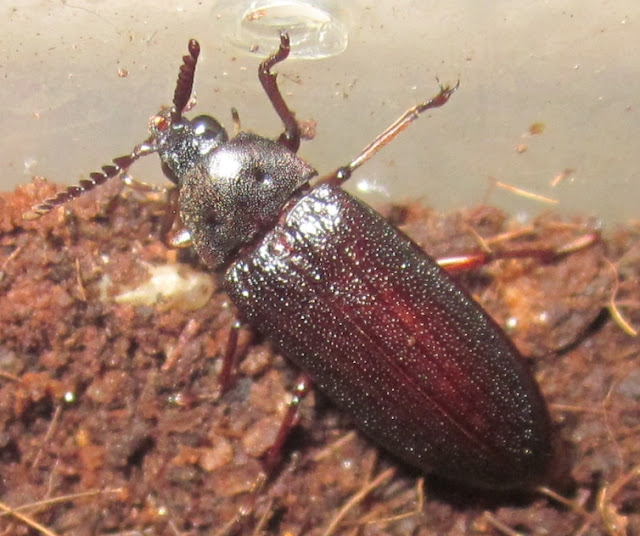My Anallacta are doing great, my first batch of nymphs have started to all molt into L2, and it looks like another ootheca hatched as well! 🙂The second instar nymphs are starting to develop the long, lanky legs characteristic of this species!
Here are some pictures of a few of the nymphs:
So far so good with these guys! If all goes well, soon I'll have more than I'll know what to do with lol!
Sadly, one of my original large Armadillidium maculatum "Dalmatian" adults has passed away due to a molting deformity, however my other ones are doing well, and I have lots of little mancae now! Some of the larger, older mancae have started developing really nice coloration, which will hopefully only intensify with age! 😁
Here are some pictures of them:
Very nice looking isopod morph, I'm glad they are breeding for me, can't wait until these mancae get bigger!
Lastly, I am very happy to tell you guys that my Zenoa picea has matured! 😄 It looks like a female to me, but that's just a guess, as I have no idea how to sex these guys. I don't know if this species actually eats as adults, I will offer it fruits, but my guess is that it won't eat them, or anything else, as these guys don't live long at all once they are mature.
Here are some pictures of it when it was teneral:
And pictures of it fully hardened:
Very glad to have been able to document most of the life cycle of this unique and poorly known beetle species, too bad I won't be able to breed them, they are pretty cool looking!
Well, that's gonna do it for this post guys, I hope you all enjoyed, will see you next time! 😉
















Nice! Glad that those little rarities are strolling right along. :) You can also add me to the list for them BTW. ;)
ReplyDeleteCongrats on the mancae, it's crazy that they're almost mature, I didn't know they grew so fast! lol I'm screwed up with Armadillidium, told you about the oranges, but I also seem to have all males/females with my group of zebras. :(
Great to hear that it eclosed properly, interesting little beetle, it's a shame you won't be able to breed it though.
Thanks! :) Alright, will do! ;)
DeleteWell these mancae were shipped to me, and had already gone through several molts, the mancae mine have produced in my care are a lot smaller still. These guys did definitely grow fast though! That really sucks man, sorry to hear that. :(
Yeah, it's certainly a strange little beetle species, glad I was able to rear my larva successfully!
Ah, I thought I was going crazy there for a second! LOL Yea, it's just the icing on the cake to my already trashy go around with isopods.
DeleteWell I hope your luck improves man, hopefully with the next trade with Kyle you'll be able to get more individuals of both species.
DeleteCongrats! How come your latest North American bug pics are not on bugguide? Surely all the experts would drool at the first ever photograph of a Zenoa pupa!
ReplyDeleteP.S: How did you instantly conclude your larva was Zenoa picea when I private-messaged you? I know it's the only callirhipid beetle in the US, but what if it was from a closely related family with almost identical larvae?
P.P.S: After having nasty Beetleforum account issues, I caught blog-fever (http://sp-uns.blogspot.com/) too! Can you help me announce it on the forum?
I'm planning on putting them on Bugguide soon, just haven't gotten around to it yet. :)
DeleteThe larvae in that picture you sent me looked identical to the one I had, and as far as I know there aren't any similar looking beetle larvae in the US, so I made an assumption. :p
Cool, looks like a neat blog! :D How would you like to announce it?
Just post in the beetleforum announcements section that "AlexW has some account problems and wanted me to announce the creation of his blog," and so on.
DeleteWait, I hope I didn't double post, there was an internet glitch.
Alright, I did it, hopefully that'll help to get more traffic to your blog! :)
Delete